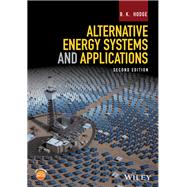The comprehensive guide to engineering alternative and renewable energy systems and applications—updated for the latest trends and technologies
This book was designed tohelp engineers develop new solutions for the current energy economy. To that end it provides technical discussions, along with numerous real-world examples of virtually all existing alternative energy sources, applications, systems and system components. All chapters focus on first-order engineering calculations, and consider alternative uses of existing and renewable energy resources. Just as important, the author describes how to apply these concepts to the development of new energy solutions.
Since the publication of the critically acclaimed first edition of this book, the alternative, renewable and sustainable energy industries have witnessed significant evolution and growth. Hydraulic fracturing, fossil fuel reserve increases, the increasing popularity of hybrid and all-electric vehicles, and the decreasing cost of solar power already have had a significant impact on energy usage patterns worldwide. Updated and revised to reflect those and other key developments, this new edition features expanded coverage of topics covered in the first edition, as well as entirely new chapters on hydraulic fracturing and fossil fuels, hybrid and all-electric vehicles, and more.
- Begins with a fascinating look at the changing face of global energy economy
- Features chapters devoted to virtually all sources of alternative energy and energy systems
- Offers technical discussions of hydropower, wind, passive solar and solar-thermal, photovoltaics, fuel cells, CHP systems, geothermal, ocean energy, biomass, and nuclear
- Contains updated chapter review questions, homework problems, and a thoroughly revised solutions manual, available on the companion website
While Alternative Energy Systems and Applications, Second Edition is an ideal textbook/reference for advanced undergraduate and graduate level engineering courses in energy-related subjects, it is also an indispensable professional resource for engineers and technicians working in areas related to the development of alternative/renewable energy systems.








